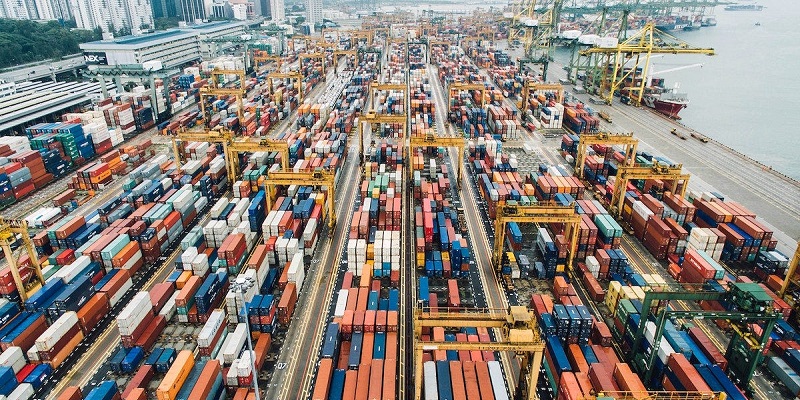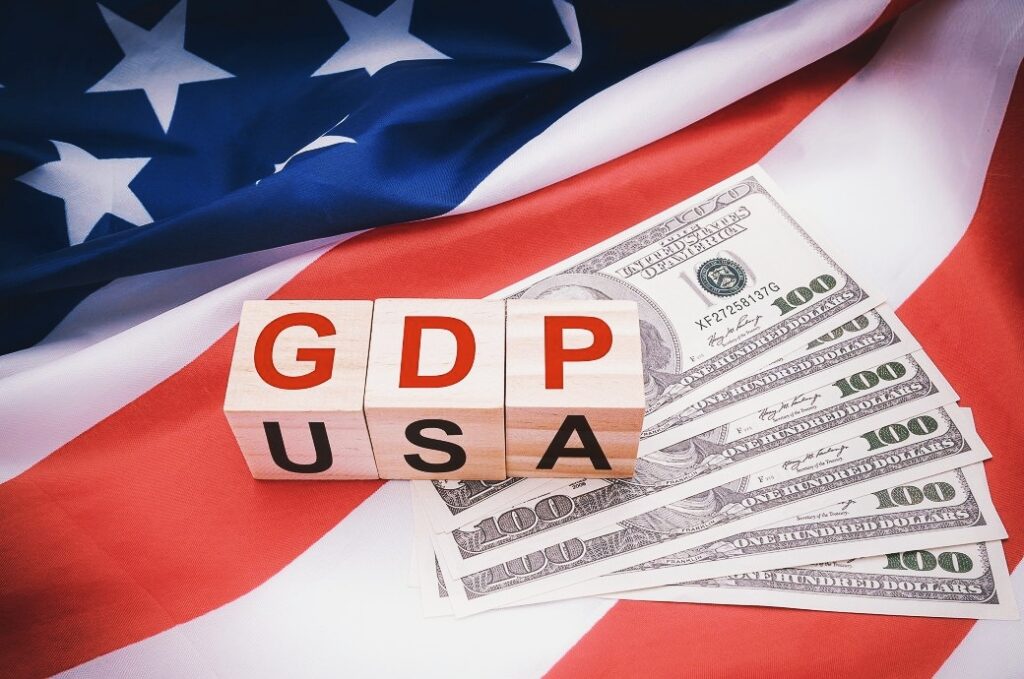The US GDP Q1 2025 report reveals an unexpected contraction in the American economy, shrinking at an annualized rate of 0.3%. This marks the first quarterly decline in over three years, fueled by a ballooning trade deficit and new import tariffs that disrupted market stability.
US GDP Q1 2025 Shows Economic Contraction for the First Time in 3 Years
According to official data, the US GDP Q1 2025 figure indicates a slowdown triggered primarily by a surge in imports.
Companies rushed to secure foreign goods before former President Trump’s proposed 26% tariffs took effect. As a result, the trade deficit expanded, dragging GDP into negative territory.

Additionally, both consumer spending and government expenditures fell slightly, adding to the overall contraction of the economy.
Market Reaction to US GDP Q1 2025 Report

Following the release of the US GDP Q1 2025 report, the Dow Jones Industrial Average fell nearly 700 points, signaling investor concern over the country’s economic trajectory. This contraction disrupted what had been a consistent, though modest, growth trend in 2024.
Trump Tariffs and Their Role in the US GDP Q1 2025 Decline
Former President Donald Trump, now a prominent figure in the 2025 election cycle, blamed the “Biden overhang” for the economic slowdown. He defended his aggressive tariff policies, stating they would ultimately boost domestic production. However, economists argue that these same tariffs contributed to the GDP decline by distorting import and export balances.
Forecasts Following the US GDP Q1 2025 Contraction
The Atlanta Fed’s US GDP Q1 2025 Now model had projected a deeper drop of -2.7%, meaning the actual US GDP Q1 2025 number was slightly better than feared—but still negative. In response to the data, S&P Global Ratings revised its US economic growth forecast for 2025 down to 1.9%, from 2.8% in 2024.
Conclusion: What the US GDP Q1 2025 Report Means for the Economy
The US GDP Q1 2025 report is a warning sign. With import surges, volatile tariffs, and wavering consumer demand, the U.S. faces a tough road ahead. Policymakers must balance protectionist strategies with sustainable growth plans to avoid a deeper recession in the quarters to come.



